When it comes to driving safety, tire pressure is always one of the hottest topics. Why does tire pressure matter? What the heck is that little annoying symbol on my dashboard? Should I under-inflate my tire during the winter? How often should I check my tire pressure?
We got tons of questions like this from our community, so for today, let's dive deep into the world of tire pressure, put our geeky glasses on and figure out everything you need to know about your tires.
1. What's The Recommended Tire Pressure For My Car?
The recommended tire pressure varies based on the vehicle makes determined by the manufacturer after thousands of tests and calculations. For most vehicles, you can find the ideal tire pressure on the sticker/card inside the driver’s door for newer cars. If there’s no sticker, you can usually find the info in the owner’s manual. Normal tire pressure is usually between 32~40 psi(pounds per square inch) when they are cold.
So make sure you check your tire pressure after a long stay and usually, you can do it in the early morning.
2. How To Check The Tire Pressure?
After knowing the proper tire pressure of your vehicle recommended by the manufacturer, you should check your tire pressure regularly to make sure that you are in good shape.
You can check your tire pressure in auto part stores, the mechanics, gas stations, and at home. To check tire pressure at home, you need:
As tire pressure changes with the temperature a lot, and recommended tire pressures are cold inflation pressure, you should start with cold tires if possible. We mostly check the tire pressure after one night's rest to avoid the heat from the friction of the last drive, and before the temperature goes up.
Unscrew the valve cap and press the tire gauge onto the valve stem hard enough until the hissing sound disappears. There should be a reading as long as the gauge is well connected to the tire.
There should be a reading as long as the gauge is well connected to the tire.
You can then note down the tire pressure of each tire, and compare them with the ideal psi you read from inside your driver’s door or in the owner’s manual. Make sure you read in detail, as for some vehicles, front and rear tires have different recommended psi.
If you find a tire underinflated, use the air compressor to fill your tires. You can either buy an air compressor in the auto parts store or use one in a gas station. Remember to rest your tires for at least half an hour to make sure they’re cold and the reading is accurate. If you have to fill your tires when the tires are hot, inflate them 3~4 psi above the recommended psi, and check again with your gauge when they are cold. It’s ok to overinflate a bit when filling the tires, as you can let the air out with the gauge.
After filling the tires, use your tire pressure gauge to check the tire pressure again and make sure they are in a good range. Let the air out a bit if they are over-inflated by pressing the gauge harder on the valve stem.
Let the air out a bit if they are over-inflated by pressing the gauge harder on the valve stem.
3. How To Maintain Proper Tire Inflation?
Tire maintenance is essential for the overall performance of your vehicle, and we highly recommend that you check your tire pressure every time you inflate your tire, each 10°F (5.6 °C) temperature change, and every 30 days.
Be mindful that don’t wait until the TPMS(Tire Pressure Monitoring System) light come on before you check the tire pressure, as the normal TPMS may:
For more information about the tire pressure monitoring system, please check our post about TPMS: What is TPMS and Why Does it Matter?
Thus, we highly recommend that you check your tire pressure regularly, especially before a long drive or heavy load driving. Also, temperature affects the tire pressure a lot, and we will explain it in the next section.
Also, temperature affects the tire pressure a lot, and we will explain it in the next section.
4. How Does Temperature Affect Tire Pressure?
First of all, the rule of thumb is for each 10°F (5.6 °C) decrease in temperature, the tire pressure will drop by one psi for most passenger vehicles. When it comes to commercial truck tires, which are often inflated to over 80 psi (twice as much as a passenger vehicle tires), the change of tire pressure according to temperature is doubled to 2 psi for every 10°F.
For the non-nerdy readers, just remember this rule of thumb and keep in mind that you will need to monitor your tire pressure during different seasons or a sudden temperature change. For those who want a deeper dive into how psi's are determined, here's the science behind it.
The equation we use to calculate the relationship between tire pressure and the temperature is called the Ideal Gas Law. It is a good approximation of the behavior of many gases under many conditions. (Appx1) It works well for most low-pressure gases. When applied to tire pressure calculation, the error is less than 1%.
(Appx1) It works well for most low-pressure gases. When applied to tire pressure calculation, the error is less than 1%.
First, we take the Ideal Gas Law equation and apply it to our circumstance:
where,
P = absolute pressure
V = gas volume in the tire
n = the number of molecules of gas in the tire
R = universal gas constant
T = temperature
Since we are trying to examine the pressure change according to the temperature, let's assume two tire pressures P1 & P2 at their set temperatures T1 & T2.
Given the n and R are both constants, and the gas volume in the tire is also a constant, we can take those constants out of the equation, and suddenly we get this straightforward one:
Let's say the temperature drops from 100°F to 50°F, the tire pressure at 100°F is 35 psi, so what's the tire pressure now at 50°F?
(the metric system is getting in the way, huh?)
Absolute Pressure = tire pressure + sea level air pressure (14. 7 psi). So,
7 psi). So,
Put all that into the equation,
So a 50°F drop in temperature lowers the air pressure by 4.5 psi, which is pretty much the same according to our rule of thumb.
5. How Does Tire Pressure Affect Driving
Both overinflation and underinflation affect your tire performance a lot, and serious problems might occur. According to NHTSA(National Highway Traffic Safety Administration), driving on underinflated tires increases a driver's chance of being in a serious accident by 300%. So how will a bad tire pressure affect driving safety? We will explain in detail below.
How tire pressure affects gripThe grip is mostly associated with the size of the contact patch between the tire and the road. An over-inflated tire radically decreases the contact patch while an under-inflated tire does the opposite.
A larger contact patch gives you more grip, and this is the exact reason why lots of racers will intentionally decrease their tire pressures to create a larger contact patch on a dry race track.
However, despite the fact that an under-inflated tire will cause more fuel consumption and improper tear and wear of the tires, for most daily commuters, it might cause an even scarier problem, which is hydroplaning.
Hydroplaning is a hazardous event when a layer of water builds between the wheels and the road surface, leading to a loss of traction that prevents the vehicle from responding to control inputs. (Appx2)
Hydroplaning occurs when the pressure of the tire pushing on the ground is equal to the water pushing back up on that tire. The size of the contact patch, given the force or the weight of the tire, is the same, directly affects the average pressure the tire's putting down on the road. The larger the contact patch (by deflating the tires), the less pressure it puts on that same area. So there's a causal relationship between your tire pressure and the possibility of a hydroplaning event.
Here's a more visual explanation of what is happening between a properly-inflated tire and an underinflated tire when driving on a wet road.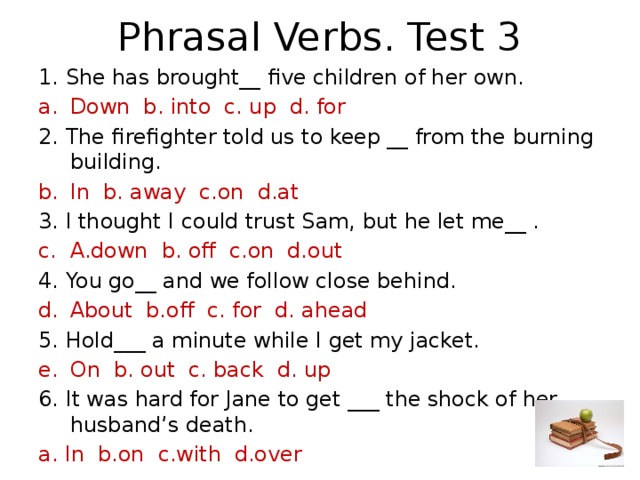
To avoid a hydroplaning event, ALWAYS inflate your tires properly. Also, check your tires' treads, which make the water flow around the tires more efficiently, and of course, driving slow is always a big plus.
How tire pressure affects tire wearThe contact patch directly decides the pattern of the tire's wear and tear. You don't want your tires to wear out prematurely just because you have an over or under-inflated tire.
How tire pressure affects fuel economyImagine you are a ball rolling on the ice, there's no friction between the two surfaces, how much extra force do you need to apply to keep the ball moving? Zero (Thanks, Newton). The same applies to your fuel consumption when it comes to driving on the road. The rolling resistance between your tires and the road significantly affects fuel economy, and by now we should all know the logic behind this, lower tire pressure leads to a larger contact patch, which causes higher rolling resistance, and thus, poor fuel economy.
A Michelin study showed that your tire is accountable for at least 1/5 of your total fuel consumption and a 1-bar of pressure drop (14.5 psi) would increase your fuel consumption by 3-5%.
6. Special Conditions For Tire Pressure Manipulation
There are of course circumstances where you want to manipulate your tire pressure to meet specific requirements. Like the aforementioned track race, or if you are driving on sand, mud, etc. However, as a daily commuter, we strongly suggest you regularly check your tire pressure, preferably once a week and anytime you might take a long road trip, and always keep the tires properly inflated!
Conclusion
Tire pressure is always a hot topic regarding driving safety, and it's important to keep an eye on the tire pressure to maximize fuel efficiency and safety.
Before you go
We'd like to offer you our most popular ZUS Smart Vehicle Health Monitor for FREE to better take care of your car and save $$$ on car expenses. Claim your free unit here.
Claim your free unit here.
Top Posts from nonda:
What is a Car Diagnostic Test & How to DIY?
What Does Check Engine Light Mean & How to Fix it?
Best OBD2 Scanner & Code Reader: Complete Buying Guide
OBD2 Codes: What You Need to Know
Appendix 1 - Ideal gas law - Wikipedia.
Appendix 2 - Aquaplaning - Wikipedia.
The recommended tire pressure is the pressure established by the manufacturer of your car as the optimal air pressure for your tires. Running your tires at the correct pressure is important because it keeps you safe, cuts down your gas bill, and makes your tires last longer. Each vehicle has its own specifications for tire pressure, but most fall between 28 and 36 PSI (pounds per square inch).
Be careful not to confuse the recommended pressure with the maximum pressure.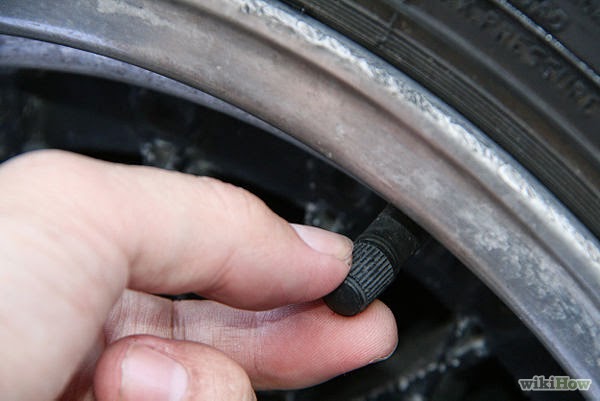 The recommended pressure is the one you should use when filling your tires, and, as explained above, you can find on your doorjamb or in your owner’s manual. The maximum pressure, on the other hand, is usually stated on the sidewall of the tire itself in small print near the tire’s bead (where the rubber abuts the rim). This measurement is provided by the tire manufacturer rather than the car manufacturer and is the maximum amount of pressure the tire can safely withstand.
The recommended pressure is the one you should use when filling your tires, and, as explained above, you can find on your doorjamb or in your owner’s manual. The maximum pressure, on the other hand, is usually stated on the sidewall of the tire itself in small print near the tire’s bead (where the rubber abuts the rim). This measurement is provided by the tire manufacturer rather than the car manufacturer and is the maximum amount of pressure the tire can safely withstand.
Your tires’ max PSI almost always exceeds the recommended pressure. It isn’t advisable to fill your tire to this pressure for everyday driving. At max PSI, your car does not handle as well, braking is impaired, and you could risk dangerous blowouts. Over-inflation can also cause the center of your tire’s tread to wear out prematurely and reduce the lifespan of your tires. You may want to use the max pressure on a temporary basis if you are hauling especially heavy load or towing something.
Most manufacturers do not state a minimum tire pressure, per se. The recommended value is the amount of air that a tire needs for a car to handle properly and safely, and anything under that value is not recommended, so functionally the optimal value is also the minimum. Under U.S. law, vehicles are required to be equipped with tire pressure monitoring systems (TPMS) that warn the driver when tire pressure falls below 25 percent of the recommended PSI. This is considered severe under-inflation, but less drastic pressure drops are still considered moderate or mild under-inflation, and they and can still have negative consequences.
If your tires are inflated to a pressure that is below the recommended PSI (as shown in the manual or on the driver’s side doorjamb), your car will not operate safely. Under-inflation can cause the tire to heat up excessively, which can make the tread pull away from the body of the tire.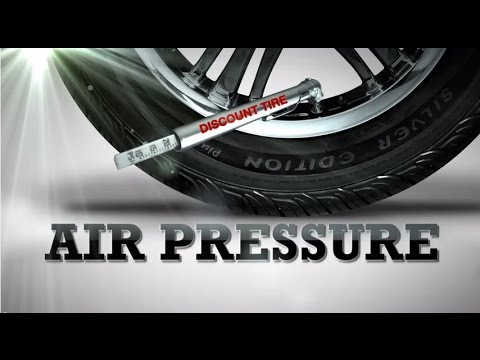 If this happens on the highway, it could lead to a blowout and a serious accident. There are also financial reasons for making sure your tires aren’t under-inflated. A low tire has more rolling resistance, which means the car has to work harder to move down the highway and consumes more fuel. Well-inflated tires are going to save you money at the pumps. Low tires also wear more quickly and unevenly, so you will have to replace them more often.
If this happens on the highway, it could lead to a blowout and a serious accident. There are also financial reasons for making sure your tires aren’t under-inflated. A low tire has more rolling resistance, which means the car has to work harder to move down the highway and consumes more fuel. Well-inflated tires are going to save you money at the pumps. Low tires also wear more quickly and unevenly, so you will have to replace them more often.
A tire pressure monitoring system (TPMS) uses either a direct sensor inside your valve stem or a combination of both software and other existing sensors in your vehicle to let you know when your tire pressure is outside of a safe range of pressures. If the pressure falls below the legally specified limit (25% of recommended pressure) an indicator light shaped like the letter U with an exclamation point inside it (representing the cross-section of a tire) will light up on the dashboard. When you see this TPMS light on you should immediately check your tire pressure and make any necessary adjustments.
When you see this TPMS light on you should immediately check your tire pressure and make any necessary adjustments.
If you have further questions about tire pressure or any other aspects of your tires, find your nearest tire dealer to get some advice.
Cordiant tire manufacturing company is one of the most demanded in the markets of the CIS countries. This is due to the high reliability and quality of products that are time-tested. Long-term operation of products ensures the selection of the correct pressure.
Contents
 The composition of the material that is used to make tires is environmentally friendly and has a minimal impact on the environment. The rubber compound has the optimal amount of additional impurities, which provide the tire with increased wear resistance, as well as excellent grip on the surface of any roadway.
The composition of the material that is used to make tires is environmentally friendly and has a minimal impact on the environment. The rubber compound has the optimal amount of additional impurities, which provide the tire with increased wear resistance, as well as excellent grip on the surface of any roadway. In addition, tires are able to withstand heavy loads, and thus they provide safe and comfortable driving on various road surfaces and in any climatic conditions. Each type of Cordinat tire is subjected to the most stringent tests, which allows you to be sure of the quality of the products. Moreover, the tires of this company meet the highest standards, which allows you to give car owners a guarantee of quality.
A distinctive feature of the tires is that the tires have extended hydro-evacuation grooves, which effectively removes water from the contact patch and provides reliable grip on the road surface. This avoids the so-called aquaplaning. In addition, the special structure of the tread allows you to safely move at high speed on wet road surfaces, and also reduces the braking distance.
In addition, the special structure of the tread allows you to safely move at high speed on wet road surfaces, and also reduces the braking distance.
An equally important feature of Cordinat tires is their low noise level. That is, while driving, tires do not emit all sorts of noises (whistles, squeaks, crackling, etc.) that can distract a person driving a car. Even if you drive on disgusting roads, the tires will emit a minimum level of noise.
Particular attention should be paid to Cordinat winter tires. Car tires have excellent characteristics of wear resistance, durability and grip. If you properly operate the winter tires of this company, then they can last about seven years without losing their characteristics. At the production stage, a special rubber compound was created for winter tires, which made it possible to ensure a safe and comfortable ride in the most severe climatic conditions. In addition, tires have unique tread patterns, which allows you to safely move on snowy and icy roads.
Cordiant today produces a fairly large range of tires for the following types of vehicles:
For each type of vehicle and type of driving, the company develops specific tread designs and tire shapes. This allows you to choose the best Cordinat tire option for any type of transport and driving. For example, for a sports car, wider sports tires are suitable for the rear axle, and slightly narrower for the front axle, as a result of which the car will be more stable during extreme driving.
Tires from this manufacturer have many advantages that not every analogue can boast of. The main advantages of tires are as follows:

The company has been producing tires of various types and purposes for quite a long time, which are designed for driving in a variety of areas.
In order for the car to feel confident on the road, it is not enough to choose high-quality Comfort tires. Equally important is the level of air in the tires. Due to the incorrectly selected pressure in the tires of the car, tire wear increases, and the control of the vehicle as a whole worsens.
Low tire pressure significantly increases the risk of blowouts and also contributes to the formation of blisters and so-called bumps on the wheel. In addition, with low pressure, there is a chance of damage to the wheel rims, not to mention the tire itself. With a lack of pressure in the wheel, the vehicle does not maneuver well, that is, the car will affect the road from side to side, especially if driving is carried out at high speeds. In addition, slightly "floating" steering is a sign of a flat tire. In addition, low tire pressure increases fuel consumption.
In addition, slightly "floating" steering is a sign of a flat tire. In addition, low tire pressure increases fuel consumption.
Excessive air level in the Cordiant Comfort tire also makes driving difficult. On pumped wheels, the car will not maneuver well due to the fact that only the central part of the contact patch will be in contact with the road surface. Excess pressure reduces the quality of control and the level of comfort when driving, that is, every bump and pebble will be felt, in addition, the load on the vehicle suspension increases. Moreover, there is a rapid wear of the central part of the tread, and the removal of fluid from under the contact patch of the wheel and the road surface worsens.
As a rule, the tire manufacturer indicates the optimum pressure for the tire on the side of the wheel (where the concern's logo is located). However, it is worth considering the type of car on which tires are installed.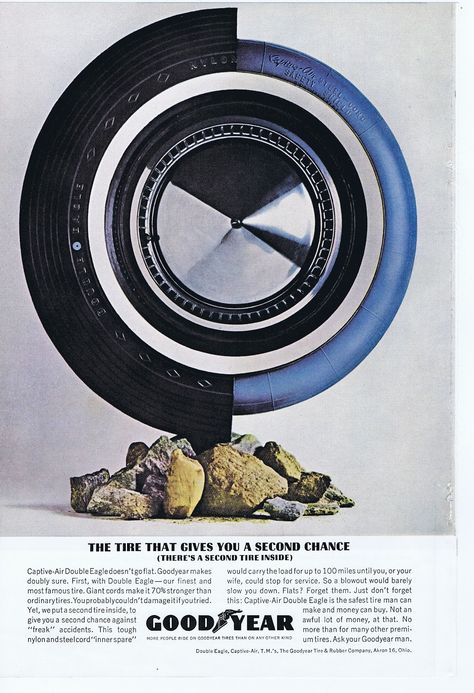
The level of air to be pumped into the tires must be specified in the instructions for use of the vehicle. On some vehicles, the optimum air level for the tires may be indicated on the driver's panel, or on the inside of the gas cap.
Front and rear Comfort wheels have different injection pressures. This is due to the fact that one of the parts of the car has more weight than the other. It also affects the type and size of the tire installed on the car.
Usually, car enthusiasts do not resort to exact data, and use the average figure to inflate tires. For a passenger car, 2-2.2 atm is pumped onto the front wheels in Comfort tires, for the rear axle 1.9-2 atmospheres. If the load of the car is increased, then the pressure is increased from 0.2 to 0.4 atmospheres. But this method has one drawback, since the pressure value for different cars can vary in completely different numbers. This is due solely to the weight and location of the power plant of the car. Based on this, this method can be used as a temporary measure.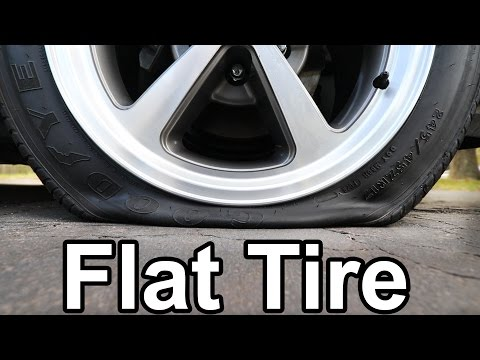
In the post-Soviet space, it is customary to consider the unit of pressure in atmospheres. That is, 1 kilogram of pressure falls on 1 centimeter squared (Kg / cm2).
On foreign vehicles, the unit of pressure in PSI (pounds per square inch) is often indicated in the operating instructions. That is, if the instructions conditionally indicate 28 PSI, then it must be divided by the value 14.706, you get 1.9atmospheres.
Kilo Pascal (1kPa =6.89 PSI or 1atm=101 kPa) is also an alternative unit of measure for a passenger car.
Tire pressure gauges are used to measure tire pressure. By type, pressure gauges are divided into three types:
This instrument is the most common and quite accurate. The principle of operation consists in a manometric tube with a spring, which is compressed and transfers the value to a scale with an arrow. However, this type has one drawback, it lies in the fact that the device is quite easy to bring down by high pressure or from falling.
However, this type has one drawback, it lies in the fact that the device is quite easy to bring down by high pressure or from falling.
Usually looks like a regular writing pen. The principle of operation is a bit similar to a dial gauge, only instead of a gauge tube, it has a coil spring inside. A mechanical pressure gauge is a fairly reliable instrument, but less accurate than a dial gauge.
Powered by an electronic sensor located inside the gauge body. This type of manometer is the most accurate and is able to measure pressure up to 0.05 atmospheres.
For winter tires, experts recommend increasing the air level by a few tenths of an atmosphere. This is necessary in order for the treads and spikes of tires to more effectively bite into ice or compressed snow, thereby providing a more comfortable and safe ride on the roads in the winter season.
In addition, low temperatures can compress the air in the tires, which is why you need to increase it a little.
One of the highest quality tires from Cordinat. These products are ideal for driving on Russian roads. These products have gained considerable popularity due to their high quality and good performance. However, choosing the right pressure will help prolong the life of these tires. The tire pressure of Cordiant Comfort, according to average indicators, should be 2.2 atmospheres.

If you need a nitrogen sample so that you can study everything properly for yourself, then put your friends in the palm of your hand. The air inside your tires is already 78% nitrogen, even if you pumped normal air into them. Therefore, when we talk about the benefits of nitrogen, we are actually talking about only 22 additional percent of this gas.
0003
Nitrogen is an inert gas, meaning it does not normally react with other substances. In the periodic table of Mendeleev, he was assigned the seventh atomic number. This is one proton less than that of the same oxygen, which is in the table under the eighth atomic number. Nitrogen atoms pair up to form molecular nitrogen or N2, which is the form of nitrogen found in air.
So what are the incredible benefits of this nitrogen? The most common thing you hear is that tires filled with nitrogen leak less gas and the car becomes much easier to drive, so fuel consumption improves and optimal tire pressure is maintained even with temperature changes.
First, let's talk about this gas leak with you.
This kinetic diameter of a nitrogen atom is actually quite a bit larger than that of the same oxygen atom. This means that nitrogen is a large "target" and therefore the probability of collision with another molecule is low. It is this argument that is most often made when trying to prove that the pressure in tires inflated with nitrogen does not decrease so much and quickly over time. That is, in fact, it is unlikely that larger molecules will penetrate the rubber of the tires and cause a gas leak.
Some sources state that oxygen atoms (in the form of O2) penetrate rubber 3 to 4 times faster than the same oxygen atoms. But this does not mean that tires inflated with air deflate 3-4 times faster, because the tires already contain about 80% nitrogen, and friends should not forget about this. I personally don't know much about this subject, and to understand how important this remaining 20% of air is, David Tracy will help me:
I have simplified this formula and it does not claim to be used to calculate pressure drop, i. e. when the tire starts to go down, but here is the difference in the amount of gas flowing per unit of time = "0" (zero). That is, that is:
e. when the tire starts to go down, but here is the difference in the amount of gas flowing per unit of time = "0" (zero). That is, that is:
The volumetric consumption of gas leaving the tire along with the air
vdot_Artire = 08*vdot_n2 + 0.2*vdot_02
vdot_02 = 4*vdot_n2
:
VDIRTIR *4*vdot_N2 = 1.6*vdot_N2
So, at a rate of 1.6 times
Tires filled with air lose air at a rate of 1.6 times faster than tires filled with nitrogen. It makes sense that nitrogen is better, but the difference is so small that most drivers won't even notice it.
As for the claim that tires with nitrogen optimize fuel consumption, the truth is that nitrogen has nothing to do with it. Tire pressure really has a big impact on fuel consumption. Tires with a high PSI (American pressure scale) reduce rolling resistance and improve fuel efficiency, usually at the expense of driving quality.
Nitrogen-filled tires can provide more stability in terms of PSI (more on that later), but this is more about maintaining optimal tire pressure, and not about what the pressure does inside the tires themselves. That is, if you keep the pressure in the tires at an optimal level, then your fuel consumption will be normal, and this is regardless of whether you pumped nitrogen into the tires or not.
One of the loudest discussions is that tires with nitrogen are able to maintain a stable level of pressure in them even when they are very hot.
That's how the representative of the BMW company explained to me:
The main advantage of using nitrogen in tires is less pressure growth as tires
And the reason for which nitrogen to a lesser extent subject to pressure increase is mainly as follows:
Moisture inside air-inflated tires increases tire pressure as they heat up. Worst of all is that the increase in pressure is a highly unpredictable thing, since everything depends on the humidity of the air pumped into the tires
Worst of all is that the increase in pressure is a highly unpredictable thing, since everything depends on the humidity of the air pumped into the tires
Water. Humidity. Viscosity. It turns out the following means that it is not at all about nitrogen, but about the absence of water vapor. Approximately 1% of normal air at sea level is water vapor, and when this air is compressed and pumped into the tire, it naturally rises in concentration.
Water vapor is much more susceptible to pressure changes caused by thermal fluctuations. The steam expands when heated, and in cold conditions it compresses and changes the pressure inside the tires, which can naturally cause problems for racing cars, because the control of such a car is tuned very precisely and, moreover, with specific regard to tire pressure.
See also: Why is it necessary to reduce tire pressure when driving off-road?
While driving, the temperature rises due to friction and deformation of the rubber.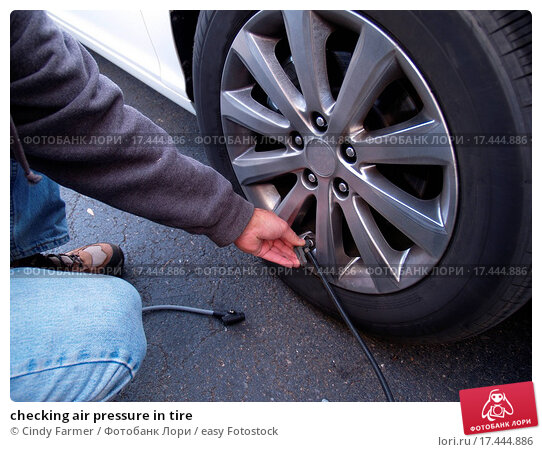 The change in temperature in this case does not depend on the ambient temperature. The temperature of the tires in this variant can rise to plus 50° in just 30 minutes of driving on the track (much higher for racing cars) and if you look at the graph of water vapor pressure at different temperatures, you can see that such an increase in temperature can lead to too high pressure.
The change in temperature in this case does not depend on the ambient temperature. The temperature of the tires in this variant can rise to plus 50° in just 30 minutes of driving on the track (much higher for racing cars) and if you look at the graph of water vapor pressure at different temperatures, you can see that such an increase in temperature can lead to too high pressure.
Suppose the initial temperature of the tires is plus 15°C and it rises to plus 32°C. In this case, the water vapor pressure increases even more, i.e. more than double. It must be said, a serious figure.
Also, as you and I know, water can freeze, so this nitrogen is used in airplanes (and at least two spacecraft, namely the Space Shuttle and the Air Force X-37B).
Therefore, the advantage of this nitrogen is precisely that it is a dry gas in itself, which can contain very little water vapor. It is certainly possible to dry ordinary air, but this is extremely inefficient and, moreover, difficult and expensive. It will be much easier to isolate the nitrogen, which will never contain water vapor due to the internal processes that are used to isolate it.
It will be much easier to isolate the nitrogen, which will never contain water vapor due to the internal processes that are used to isolate it.
In addition to maintaining a stable pressure level, there are other reasons why it is a good idea to remove water vapor from tires. Water vapor can cause rust and corrosion inside the valve stem or directly on the wheels themselves. There is also an opinion that oxygen reacts more actively with rubber and therefore, if you replace it with an inert gas such as nitrogen, this will extend the life of the tires.
Yes, it becomes clear that technically nitrogen is better than simple air pumped into tires, although it happens (sometimes) not in nitrogen itself, but, for example, in the same water vapor.
Is it worth it? For whom, how ... For normal driving - perhaps not. Although there is indeed a benefit, it is so insignificant that you won’t even notice it.